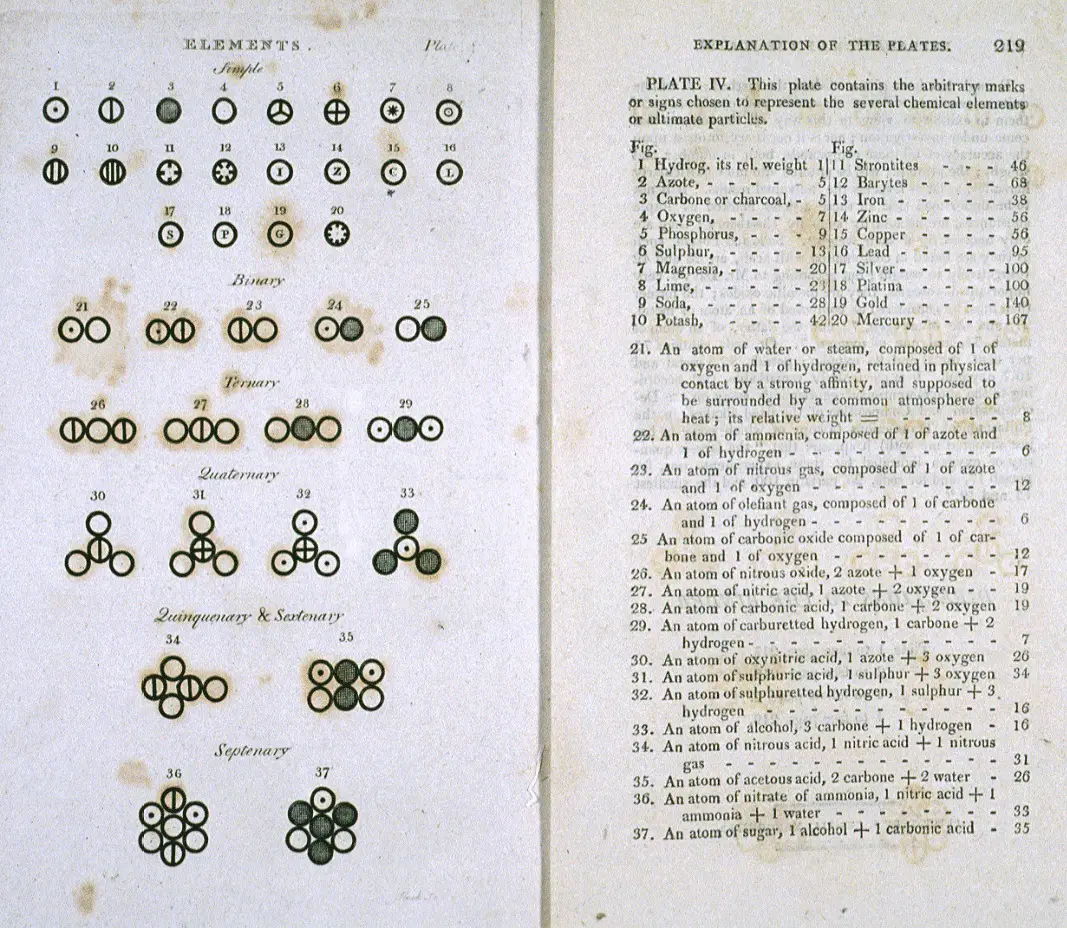
The law of multiple proportions is one of the weight laws of chemistry that plays an essential role in understanding how elements combine to form chemical compounds. Furthermore, it is one of the fundamental laws of stoichiometry, a branch of chemistry that deals with the quantitative relationships between reactants and products in a chemical reaction.
The law, which is also known as Dalton's law, states that if two chemical elements form more than one compound, the proportion of the mass of the second element that combines with a fixed mass of the first element will always be proportions of simple integers.
British chemist John Dalton expressed the law of multiple proportions in the early 19th century, in 1803, and was based on the observation that elements combine in simple, fixed proportions to form compounds. For this reason, the law is also known as Dalton's law or Dalto's law of multiple proportions.
The formulation of the law of multiple proportions
Dalton's law states that when two elements combine to form more than one compound, the masses of one element that combine with a fixed mass of the other element are in a ratio of small integers.
In other words, compounds form in simple, fixed proportions.
Illustrative example: oxygen and nitrogen compounds
Let's take the example of oxygen and nitrogen compounds.
When oxygen combines with nitrogen to form oxides, the masses of oxygen that combine with a fixed mass of nitrogen are in a ratio of small integers.
For example, nitrous oxide (N₂O) is made up of two nitrogen atoms and one oxygen atom, while nitric oxide (NO) is made up of one nitrogen atom and one oxygen atom.
The masses of oxygen that combine in these compounds follow a simple ratio of 1:2, complying with Dalton's law of multiple proportions.
History and background
Before the formulation of the law, chemists had a limited understanding of how elements combined to form compounds.
Substances were often believed to combine in arbitrary and not necessarily fixed proportions. However, as experimental chemistry advanced, evidence accumulated that this assumption was incorrect.
One of the experiments that led to the formulation of the law of multiple proportions was carried out with oxygen and nitrogen. Henry Cavendish, an 18th-century British chemist, discovered that air was composed mostly of nitrogen and oxygen, but the proportions were not fixed. However, Dalton, in the 19th century, observed that when nitrogen and oxygen combined to form different oxides, they always did so in simple, fixed proportions.
Precedents: laws of definite proportions and conservation of mass
A few years earlier, the French chemist Joseph Proust had presented the law of definite proportions. The law of definite proportions postulated that elements combine to form compounds in specific, constant proportions, expressed by ratios of whole numbers.
However, in Proust's work a phenomenon occurred that went unnoticed by him: the existence of chemical elements that could combine in different proportions to form different chemical compounds. This phenomenon caught Dalton's attention in his research.
Later, Antoine Lavoisier proved the Law of Conservation of Mass, which also contributed to Dalton's work.
Relationship with Dalton's atomic model
 The law of multiple proportions, formulated by John Dalton, and his atomic model are closely related in the history of chemistry.
The law of multiple proportions, formulated by John Dalton, and his atomic model are closely related in the history of chemistry.
The law states that when two elements combine to form different compounds, they do so in fixed, simple proportions, with ratios of small whole numbers. This provided strong evidence for Dalton's atomic model, which postulated that matter was made up of indivisible atoms and that these atoms combined in specific proportions to form chemical compounds.
Dalton's law supported the idea that atoms of different elements had different masses and combined in defined proportions.
Importance of Dalton's law
The law of multiple proportions is of utmost importance in chemistry as it provides a solid foundation for understanding how elements combine to form compounds and how the masses of elements in these combinations are related.
Some of the reasons why this law is essential are the following:
- Confirmation of the atomic theory: Provides solid evidence in favor of the atomic theory proposed by Dalton, as mentioned above.
- Predicting the stoichiometry of compounds: This law allows chemists to predict the stoichiometry of chemical compounds, that is, the quantitative relationship between elements in a compound.
- Development of the periodic table: The law of multiple proportions contributed to the development of the periodic table of elements, which organizes elements based on their chemical properties and their behavior in the formation of compounds.
- Fundamental to Quantitative Chemistry: Stoichiometry is fundamental to quantitative chemistry, which deals with precise measurements and quantitative relationships in chemical reactions. Dalton's law is an essential part of this discipline.
Practical examples
Below are some examples that illustrate this law:
Carbon dioxide (CO₂) and carbon monoxide (CO)

In carbon dioxide, one carbon atom combines with two oxygen atoms, while in carbon monoxide, one carbon atom combines with one oxygen atom.
The masses of oxygen combine in a ratio of 1:2, thus complying with the law of multiple proportions.
Nitrogen oxides (NO, N₂O, NO₂)
Nitrogen oxides are a classic example of the application of this law. In these compounds, the masses of oxygen that combine with a fixed mass of nitrogen follow small integer ratios, such as 1:1, 1:2, and 1:3.
Sulfur oxides (SO₂, SO₃)
Sulfur can combine with oxygen to form sulfur dioxide (SO₂) and sulfur trioxide (SO₃).
In sulfur dioxide, one sulfur atom combines with two oxygen atoms, while in sulfur trioxide, one sulfur atom combines with three oxygen atoms. Again, oxygen masses follow small integer ratios, complying with Dalton's law of multiple proportions.
Current applications of the law
 Currently, this law is still relevant in modern chemistry and has important applications in various areas:
Currently, this law is still relevant in modern chemistry and has important applications in various areas:
- Chemical synthesis: Chemists use this law to design and optimize synthesis processes of chemical compounds, ensuring that the proportions of the reactants are adequate to obtain the desired products.
- Chemical analysis: In quantitative chemical analysis, this law is used to determine the concentration of a substance in a sample, based on the mass relationship between the elements present.
- Pharmaceutical Industry: The synthesis of drugs and chemicals in the pharmaceutical industry relies heavily on the application of the law of multiple proportions to ensure the purity and effectiveness of the products.
- Materials science: In the manufacturing of materials and nanomaterials, this law is essential to control the proportions of components and achieve the desired properties.
- Environmental Research: In environmental studies, Dalton's law is used to analyze the chemical composition of samples and understand the distribution of elements in nature.